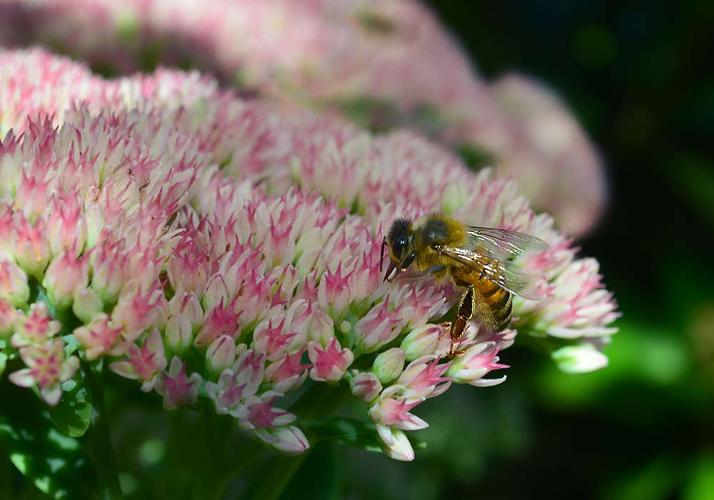It's around this time of year that most gardeners start realising that summer is really moving on and the ‘tide' of Autumns arrival can no longer be pushed back. As gardeners will readily accept, that this is however, not a time of melancholy but just a different gardening phase in another year.
So, before we move on, let's just for a moment reflect on the summer that's coming to a close.
CLIMATE CHANGE
I don't know for sure but, like almost everyone else on the planet, I too suspect that in our world of climate change, there's compelling evidence all around us that summer temperatures are becoming less predictable. In 2021 in East Anglia the summer hasn't replicated the blistering heat of 2020 but that, for me, felt like a good thing. It took a while for the tomatoes, aubergines, and peppers in my greenhouse to ripen and they all seemed to be triggered in the same week around the middle of July, but the lack of higher temperatures didn't seem to affect the herbaceous borders and in a lot of ways it actually helped them. My stalwarts of Salvias and Veronica did exceptionally well. August was a surprising month with very much lower than normal temperatures combined with very little rainfall, so the watering regime had to be consistently maintained around the veg patch. Overall, a pretty good summer given we were all tentatively coming out of lockdown and the importance of a garden space was truly underlined.
LATE SUMMER FLOWERING
So now I'm already thinking about the autumn and winter, and planning for next year. This is a time of year when late flowering perennials come into their own and I've seen some great late summer displays of Verbena rigida, Helenium, Rudbeckia, Symphyotrichum and Perovskia in some of the gardens I've designed. In 2020 I grew some Perovskia ‘Blue steel' for my own garden from seed. It's a smaller variety than the more commonly found ‘Blue Spire' but just as attractive to bees and very welcome in a small garden (which mine is).
These late flowering perennials add significant colour to borders with Helenium and Rudbeckia providing hotter colours in the dwindling heat at the end of summer.
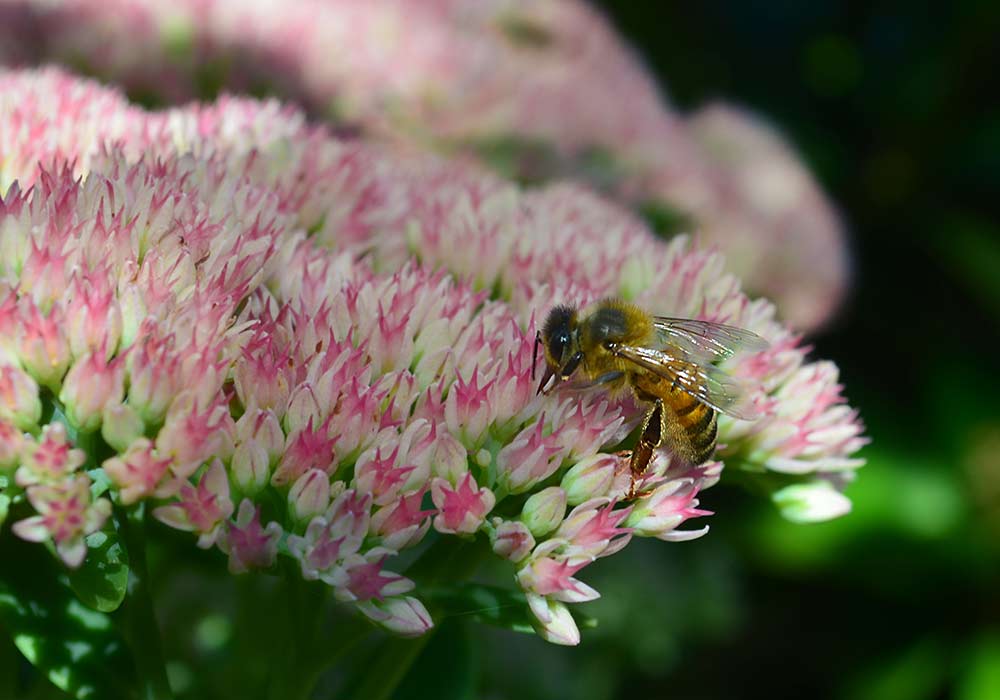
Another favourite of mine at this time of year is the deeper pink shades of Hylotelephium (previously known, and possibly preferred, as Sedum). In my garden I have planted and divided over the last few years the cultivar ‘Autumn Joy'. This is just starting to come into its own, providing bees with an end of summer bounty of nectar through the autumn until it changes into a ‘petrified', deep crimson display at the onset of winter.
Another sure sign of Autumn, when the mornings are cooling and moisture abounds, are the silky structures of Araneus diadematus or otherwise known as the ‘European garden spider' or ‘Cross spider'.
I know spiders aren't everyone's thing, (as I well know, being married to someone who suffers from arachnophobia), but I'm always struck by the beauty of the markings on these spiders and the structural excellence of their webs.
Another example of this structural beauty is shown on some late flowering Salvia nemorosa caradonna below left and right.
I always find myself asking why can't humans build structures with such elegance?
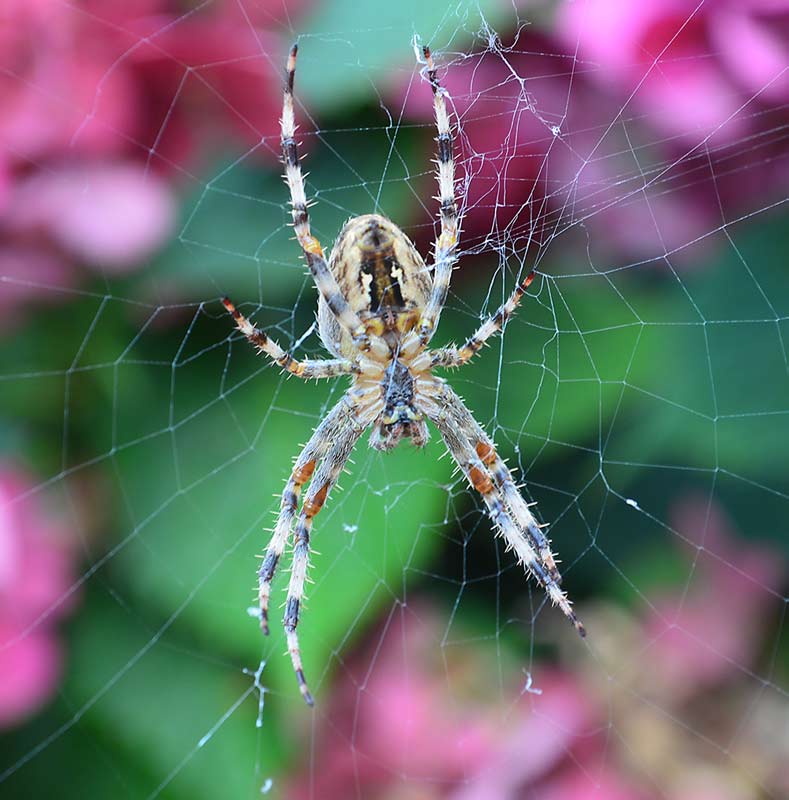
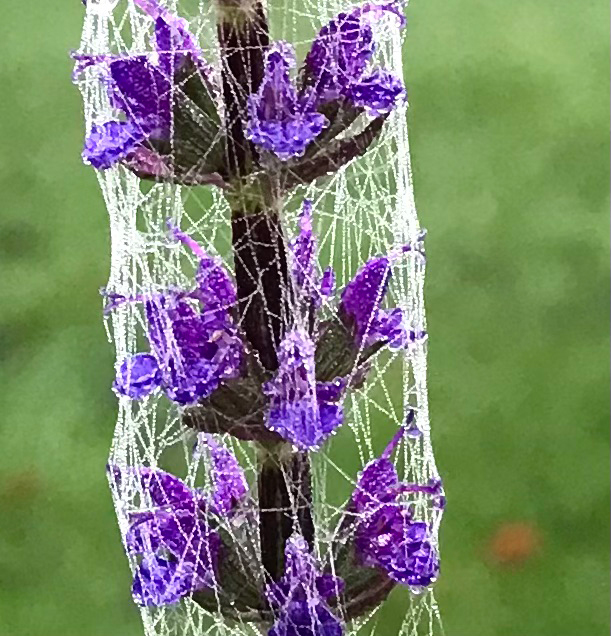
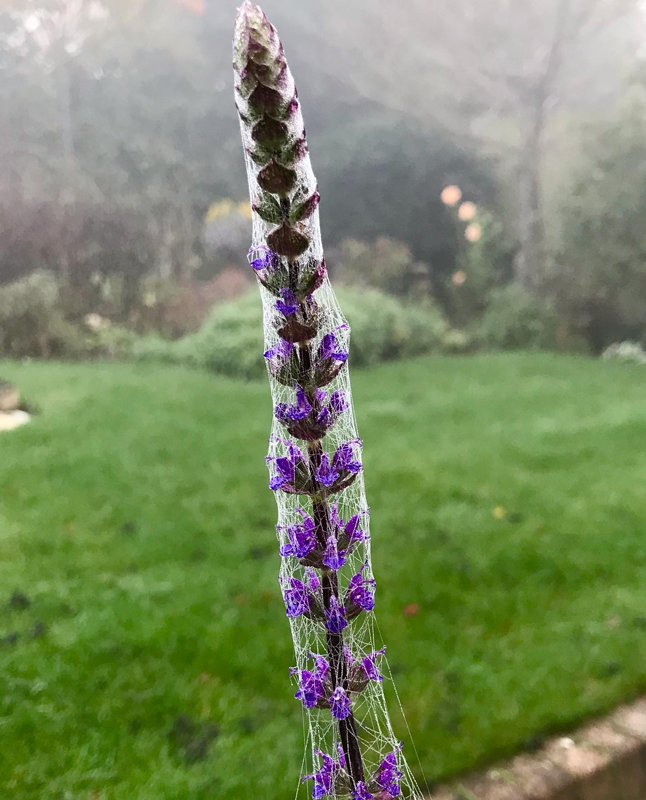
So, in preparation for next year, I'm not just thinking about my own garden but also those gardens where customers have requested support. The list will include what went well this year and what needs dividing or pruning to keep the gardens in good shape. The reason I make the notes now is once we're into the deepest parts of winter the garden can look a completely different place with many herbaceous areas looking a bit like the aftermath of an apocalypse, which incidentally is quite normal. However once spring ‘kicks off' those open spaces will be filled to capacity. Dividing plants is a great way to increase stock and ensure healthy new growth of existing plants.
Once into winter there are a number of shrubs, which can be pruned but be careful as some shrubs prefer pruning towards the end of winter and early spring, especially if they are winter flowering species such as Hamamelis (Witch hazel), which should be pruned after it flowers in winter. Roses and late flowering Clematis (group 3) are candidates for pruning in winter as are old or neglected shrubs, which need reshaping.
Winter is also a good time to clean and clear out the greenhouse. If its anything like mine, greenhouses can become cluttered during the year with pots, trays, bags of compost or grit and tools. Thorough cleaning of your green house will help prevent diseases continuing from one year to the next and help get rid of pests that may be overwintering in your frost-free space.
So…. lots to do over the next quarter and lots to look forward to in 2022.

